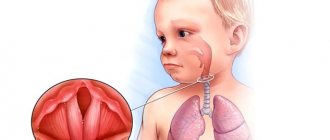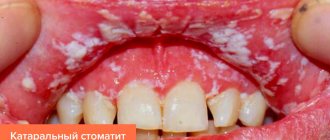Recently, there has been a negative trend towards an increase in the incidence of sexually transmitted infections among people of all ages. One of the most common diseases among them is ureaplasmosis. This pathology can be asymptomatic or have a blurred clinical picture, which is why patients often seek medical help when complications arise. However, visiting a doctor at the MedArt clinic in the early stages allows you to completely recover from this pathology and prevent infection of others. Therefore, it is extremely important to know the main symptoms and treatment of ureaplasmosis, since this knowledge will help to suspect the presence of a problem at an early stage.
What is this?
This disease has a bacterial etiology. It develops as a result of the entry and active reproduction in the body of an intracellular parasite - ureaplasma. The following types of this microorganism are dangerous to humans: Ureaplasma urealyticum and Ureaplasma parvum. Due to its small size, this bacterium easily overcomes the cellular barrier, penetrating inside. It readily colonizes the mucous membranes of the genital organs, causing the development of a local pathological focus.
It is important to know how ureaplasmosis is transmitted, as this information will help prevent infection and protect your loved ones. There are several possible mechanisms of transmission of this disease:
- Unprotected sexual contact. This is the most common method of infection. As official statistics show, about 20-40% of the total number of infected people do not experience any problems with their health. Therefore, they are carriers capable of infecting other people. But in the event of unfavorable internal environmental conditions or a decline in immune defense, the risk of clinical symptoms increases significantly. It should be noted that infection with ureaplasma is possible not only through sexual contact, but also through oral, genital and kissing;
- Vertical mechanism (from mother to fetus). This method of infection is closely related to the favorite habitat of this parasite - the mucous membranes of the genital organs. During natural delivery, the child passes through the woman’s genital tract, becoming contaminated with ureaplasma;
- Contact and household path. At the moment, there is no convincing evidence base that allows us to unequivocally state about this method of infection. However, you should carefully handle household items, toilet lids and other objects that a potentially sick person comes into contact with.
Routes of infection
In most cases, ureaplasma is transmitted through any type of intimate contact, including oral sex. In rare cases, vertical infection is possible, that is, during childbirth, the disease is transmitted from mother to child. Infection through household contact is extremely unlikely. since, being so-called membrane parasites, they cannot live outside living cells and quickly die in the external environment.
Photo: bilahata / freepik.com
Causes
There are several risk factors, the presence of which significantly increases the likelihood of contracting this pathology. This:
- Promiscuous sexual life and refusal to use barrier contraceptives (especially with strangers or unfamiliar people);
- Failure to comply with basic rules of personal hygiene;
- Using someone else's hygiene items (towel, bed linen, toilet rim, etc.);
- Decreased immunity (recent illness, stress, poor diet, taking certain medications, and much more).
The causes of ureaplasmosis are directly related to the routes of transmission of this infection. It is important to note that the incubation period: if infected: can range from 7 to 20 days. However, with strong immune defense, this parasite can remain dormant in the human body for years. Its activation is possible in the following situations:
- Exacerbation of chronic diseases with a history;
- The recovery period after surgery or after an illness;
- Injury to the genitourinary organs;
- Taking certain medications (especially when taken without a doctor’s prescription);
- Constantly being in a stressful environment;
- Poor nutrition or fasting (the daily diet should consist of foods with sufficient amounts of proteins, fats, carbohydrates, vitamins, minerals and trace elements);
- Hormonal changes caused by pregnancy, abortion and other conditions.
Antibiotics for ureaplasma
How to cure ureaplasmosis in women? Only with antibiotics:
| Antibiotic group | Drugs |
| Macrolipids | Sumamed, Azithromycin. These are first-line agents that accumulate in cells in the required concentration for at least 3 days. |
| Tetracycline | Doxycyline, Unidox. Just 10 years ago they were the basis of therapy, but now they are prescribed only in combination with another antibiotic. And all because the bacteria quickly adapts to it. |
| Fluoroquinolones | Avelox, which cannot accumulate in cells for a long time, so their administration is long-term, more than 21 days. |
Important! In case of mild inflammation, the course of therapy is treated with only one antibacterial drug, and if it is complicated, then the treatment regimen will be tandem, for example, alternating macrolides and tetracyclines.
Symptoms
As mentioned above, ureaplasma can remain in a vegetative state in the body for several years without showing any symptoms. However, carriage cannot protect the health of the infected person, since when unfavorable internal factors occur, the parasite begins to become active. Increasingly, patients are experiencing simultaneous infection with several sexually transmitted infections. Because of this, the clinical picture may be blurry and not typical for a classic case. The manifestation of the disease varies depending on individual characteristics, concomitant disorders, severity of the condition and gender differences.
Why is ureaplasmosis dangerous?
Ureaplasma reduces the motor activity of sperm, which can cause a couple to have problems conceiving. Exceeding the norm of this bacterium is often accompanied by chlamydia, mycoplasmosis and other sexually transmitted infections. As ureaplasmosis progresses, it can provoke various inflammations in the genitourinary system:
- urethritis,
- adnexitis,
- colpitis,
- cystitis,
- vaginitis,
- cervicitis.
Ureaplasma urealiticum during pregnancy can pose a serious threat. The bacterium can cause diseases of the lungs and bronchi, as well as provoke miscarriage. In a child, the microbe can lead to the development of meningitis and bacteremia.
Ureaplasmosis in men
- Urethritis. It is characterized by severe discomfort, pain and burning in the urethral area. The pain becomes more pronounced when urinating and becomes almost unbearable (patients note pronounced pain). During sex, pain also occurs, which intensifies after ejaculation. There are also signs of general intoxication: general weakness, malaise, low-grade body temperature, fever;
- Presence of discharge from the urethra. In most cases, they are mucous in nature, liquid in consistency, and are released in large quantities;
- Inflammation of the epididymis. In the absence of timely treatment, the symptoms of ureaplasmosis in men can be complemented by heaviness and pain in the testicles. The pain increases greatly with palpation and any tactile contact;
- Signs of prostatitis. In most cases, they occur in late stages and indicate the active progression of the pathological process. Patients suffer from intense pain in the perineum, which gets worse when sitting. A drop in libido and erectile dysfunction are also possible, and discomfort and pain appear during sex;
- Infertility. The prolonged course of the inflammatory process in the prostate gland and orchitis causes significant harm to sperm production and sperm quality, which can lead to the development of male infertility.
Among women
- Urethritis. Manifests itself as a burning sensation in the urethra. Upon visual examination, the doctor detects signs of an inflammatory process on the mucous membranes of the external pharynx;
- Discharge from the genitourinary tract. As a rule, they are mucous in nature and are secreted in large quantities;
- Pain during sex. This sign is associated with additional mechanical contact with the mucous membrane, where active inflammation is localized;
- Discharge of blood after sexual intercourse. Due to the presence of inflammation on the mucous membrane and mechanical impact on it, the integrity of the mucous membrane may be impaired, which leads to the appearance of small local bleeding;
- Frequent pain and discomfort in the lower third of the abdomen. These symptoms of ureaplasmosis may signal the progression of the infection and the involvement of other organs of the reproductive system (uterus, fallopian tubes) in the pathological process;
- Infertility. Lack of timely treatment and ignoring this problem can lead to damage to the uterus. As a result, a woman cannot become pregnant and carry a child. Even with successful conception, she may experience frequent early miscarriages or premature births.
In pregnant women
The clinical picture of ureaplasmosis during pregnancy is not specific. The most common symptoms of the disease during pregnancy are:
Severe itching and burning in the genitourinary area: aggravated by urination.
- Vaginitis: intense pain, increased body temperature, scanty discharge, general malaise;
- Inflammation of the mucous layer of the cervical canal.
Despite the minimal differences in the symptoms of this disease in pregnant and non-pregnant women, there are a number of features that must be taken into account during pregnancy. This:
- During pregnancy, there is a physiological decline in immune defense. Therefore, if previously the patient was a carrier, then after the formation of the fetus she may become sick;
- In the first trimester, it is prohibited to prescribe antibacterial drugs. Antibiotics have a large number of unwanted and dangerous side effects that can have a detrimental effect on the growth and development of the child in the womb;
- Due to the decline in immune defense, ureaplasma contributes to the addition of other sexually transmitted infections.
There are various consequences of ureaplasmosis during pregnancy. If the disease is diagnosed in the first trimester, then fetal development disorders (congenital anomalies), frozen pregnancy and miscarriage are possible. In later stages, the risk of developing fetoplacental insufficiency and intrauterine hypoxia increases significantly. Premature birth is also possible; the baby may be born weak and underweight. With prolonged fetal hypoxia, the appearance of not only physical, but also mental disorders is allowed. There is also evidence that ureaplasma has a destructive effect on the nervous system. Therefore, earlier women were shown termination of pregnancy. However, today this is not an indication for abortion, so if you contact the specialists of the MedArt clinic in a timely manner, you can carry and give birth to a healthy baby.
Complications
Among the complications, it is also customary to distinguish female and male ones, however, both groups have a common sign of serious damage to the organs of the genitourinary system. The disease can lead to cystitis, pyelonephritis, disturbances in the enzymatic system, due to which muscle pain is observed with ureaplasmosis, arthritis may develop, or joints may be affected.
Main complications in men:
- urethritis - discomfort during urination, as well as pain and stinging, burning in the urethra;
- epididymitis - inflammation affects the epididymis;
- prostatitis – leads to problems with erection;
- infertility - due to disturbances in the structure of sperm.
Main complications in women:
- inflammation of the mucous membranes of the uterus and vagina - colpitis, endometritis and others;
- inflammation of the muscles on the uterus - myometritis;
- cervical erosion;
- the occurrence of adhesions;
- miscarriage, miscarriage, premature birth.
Diagnostics
To make a diagnosis, you will need to carefully collect complaints and anamnestic data. However, the symptoms described above are not enough to diagnose ureaplasmosis. Despite the fact that they are indirect signs of the disease, they do not appear in all patients and can have varying degrees of severity. Therefore, the next stage of diagnosis is inspection. Men are examined by a urologist or dermatovenerologist, and women are examined by a gynecologist in a gynecological chair. During a medical examination, an inflammatory process on the mucous membranes and the presence of copious mucous discharge can be detected. However, in order to obtain the most reliable diagnostic data, before the examination it is recommended to adhere to the following preparatory measures:
- Two days before the doctor’s appointment, refrain from any sexual relations;
- 3 days before the examination, stop using vaginal suppositories, gels and tampons;
- Before the procedure (if the appointment is scheduled for the morning, then in the evening) take a shower or bath, but without using intimate hygiene products;
- Stop douching.
The most reliable way to confirm this diagnosis is laboratory diagnostics. Analysis for ureaplasmosis can be carried out with different types of biological material from the patient (blood and scrapings from the mucous membrane). Possible purpose:
- PCR diagnostics. To identify this parasite, PCR tests are used, based on the detection of specific sections of the microorganism’s DNA. In most cases, urine is collected for this test. The sensitivity and specificity of this diagnostic method reaches 95%, due to which the possibility of obtaining a false answer is minimized. Sensitivity with other vaginal swabs is slightly lower, at 86%. PCR is the main way to detect ureaplasma infection.
- ELISA and PIF. With their help, you can find antibodies to ureaplasma. The results obtained are quite difficult to interpret, since there is no stable immune protection against ureaplasmosis, and the number of carriers significantly exceeds the number of patients with active symptoms.
Today, these are the only laboratory diagnostic methods that are advisable to prescribe. Other methods are used only for scientific purposes. Microscopy, for example, is not used due to the small size of the parasite. It simply cannot be seen under a microscope, using even the most modern technical devices. In addition, this microorganism does not have cell walls, making Gram staining impossible. The purpose of microscopy is allowed exclusively to assess the state of the vaginal microflora and the degree of leukocytosis.
The diagnostic methods described above, in most cases, are sufficient to establish a diagnosis. It is important to note that not only the sick person needs to be examined, but also his sexual partner. This is an important component of successful treatment, since by hiding the fact of infection, one can become infected again during further sexual contacts.
Analysis for ureaplasma
Diagnosis of ureaplasmosis, namely, testing for urealyticum and parvum species, is recommended for women who have suffered inflammation of the appendages and uterus (endometritis), suffering from miscarriage and infertility, cervical erosion and menstrual dysfunction, as well as those suffering from chronic colpitis. As part of a gynecological examination of virgin girls and adolescents, gynecologists take a test for ureaplasma (culture, smear, quantitative PCR and blood tests) if there are complaints of excessive discharge and discomfort in the intimate area.
There are several generally accepted research methods. The main tests for ureaplasma in women include:
- Bacteriological culture of ureaplasmas with determination of titer and selection of antibiotics,
- Determination of antibodies in blood tests for ureaplasma urealiticum,
- Complex floracoenosis,
- DNA method (PCR analysis, qualitative and quantitative).
A high percentage of reliability of the result is achieved by the simultaneous use of such tests for urealiticum and parvum species - PCR, blood for antibodies, culture for quantity and sensitivity to antibiotics. Below you can see a list of methods and prices for testing for ureaplasma in women and men. They can also be taken from children and teenage girls.
Diagnosis of ureaplasma
What tests need to be taken for ureaplasmosis and their cost, ₽
| List of tests | Price |
| PCR qualitative | 450 |
| PCR quantitative | 850 |
| Florocenosis | 3 500 |
| Crops | 1 750 |
| Blood analysis | |
| IgA antibodies | 750 |
| IgG antibodies | 750 |
| IgM antibodies | 750 |
home
Treatment
Regardless of the clinical case, treatment of ureaplasmosis is carried out in accordance with the following rules:
- Not only the patient, but also his sexual partner should be treated. Having a regular sexual partner, it is necessary to come for examination and receive therapy together. This helps prevent re-infection and spread of the disease;
- If concomitant infections are detected, therapy is selected according to an individual scheme. The attending physician at the MedArt clinic selects the most appropriate medications and their dosage;
- During the period of receiving therapy, you will need to abstain from any sexual relations (even using condoms);
- To consolidate the therapeutic result and prevent relapse, a follow-up examination is carried out.
Treatment of ureaplasmosis in men and women is carried out according to the same scheme. It involves an integrated approach that simultaneously affects different systems of the body. For this purpose they prescribe:
- A course of antibacterial drugs. Antibiotics can be taken either in tablet form or as vaginal suppositories. It is possible to administer medications using douching. To prevent disruption of the intestinal microflora, patients are prescribed probiotics to prevent disruption of the digestive tract;
- Immunostimulants. They strengthen immune defense, as a result of which the body intensively fights infection and its consequences;
- Temporary refusal of sex. This is a necessary measure that makes it possible to prevent the disease from becoming chronic or carrier. It also helps prevent reinfection and infecting other people;
- Diet. Since ureaplasmosis must be treated comprehensively, it is worth paying special attention to the diet. You will need to limit your consumption of fried, smoked and salty foods. It is also recommended to avoid alcoholic beverages (especially while taking antibiotics).
As mentioned above, to eliminate ureaplasma, it is necessary to examine and treat not only the patient, but also his sexual partners. After completing the therapeutic course, you will need to monitor the presence of the parasite for the first 3-4 months, so it is important to regularly visit the doctor on the appointed days.
In the absence of timely medical intervention, this disease can become chronic. In this case, the treatment regimen for ureaplasmosis changes. The patient is prescribed a long course of antibacterial drugs. In the absence of the desired therapeutic effect, it is possible to change the antibiotic group. Immunomodulators are also used to improve immunity. To improve the prognosis and well-being, patients are advised to undergo physiotherapy.
Drug therapy for ureaplasmosis
Doctors select a treatment regimen for the patient taking into account the allergy history, the susceptibility of the pathogen to the antibacterial drug, and the presence of chronic pathologies. Basically, the attending physician prescribes tablets and suppositories. Medicinal injections are used only in advanced cases of illness, when the infection is mixed (“bouquet” of several microorganisms) or the patient has contraindications to taking tablet medications (problems with the gastrointestinal tract).
Therapy for ureaplasma is complex and includes:
- Antibiotic therapy (the main drug against the microbe selected by the doctor is the key to successful treatment).
- Symptomatic treatment, normalization of the microflora of the vagina and intestines, restorers of the mucous membrane of the genitourinary organs (Methyluracil).
- Local treatment (suppositories, suppositories with anti-inflammatory and antimicrobial effects) - Genferon, Hexicon.
- Immunomodulators (means to increase the body's defenses) - Ureaplasma-Immun, Immunal, Echinacea, St. John's wort tincture, as well as vitamins.
- Enzyme medications - Wobenzym, Lidaza.
- Antioxidants - Antioxycaps.
- Diet therapy (no pickles, smoked meats, marinades, spicy foods).
- Adaptogens - Estifan, Ginseng, Rhodiola rosea.
- Antifungal drugs. Protect against dysbacteriosis - Fluconazole and its analogues (Diflucan, Mikosist); Nystatin, Levorin, Orungal.
- Ban on bad habits - drinking alcoholic beverages is strictly prohibited.
- Biostimulants - Plazmazol, Aloe extract.
- Sexual taboo (for 7–10 days).
- If the disease is difficult to treat, Polyoxidonium is prescribed in the form of tablets, injections or suppositories. The course is selected individually.
As soon as the treatment regimen ends, you will need to again undergo a series of necessary laboratory tests recommended by your doctor. The tests must be repeated exactly after 1.5 months. Treatment will only be effective when the patient takes it seriously, strictly following the instructions. Doctors at Polyclinic +1 will tell you in detail during your consultation what (symptoms) this or that drug is for.
Antibacterial drugs
The tetracycline group, macrolides and fluoroquinolones fight the pathogen most effectively. Taking antibiotics according to the regimen for 7–10 days can completely eliminate the infectious process and carriage.
The most commonly prescribed drugs are the following (one of them):
- Doxycycline;
- Clarithromycin;
- Erythromycin;
- Levofloxacin;
- Josamycin (Vilprafen Solutab);
- Macropen;
- Ofloxacin;
- Tsiprolet;
- Cycloferon;
- Ciprofloxacin;
- Moxifloxacin.
Before taking the medicine, the patient must undergo a sensitivity test.
IMPORTANT! We do not recommend diagnosing yourself and prescribing antibiotics. You may not only not achieve the desired result, but also cause great harm to the body. Only a qualified gynecologist or urologist can prescribe the correct medications and treatment regimen.
Suppositories
How else to treat ureaplasma in women, besides antibiotic tablets? Preparations in the form of suppositories (suppositories) refer to local therapy. They are inserted into the vagina of women 1 or 2 times a day. Local treatment kills the pathogen.
Suppositories have an antibacterial effect. Additional properties of suppositories include anti-inflammatory, analgesic and antiseptic effects. For ureaplasma, Genferon, Hexicon-D, Viferon, Panavir, Terzhinan are prescribed.
After the main therapy, the gynecologist may prescribe suppositories Gynoflor, Bifidumbacterin, Vagilak. These products will completely restore the vaginal microflora.
ethnoscience
This includes herbal medicine, which is an additional method. If there are no contraindications or allergies, you can make infusions and decoctions of herbs that are taken orally or douched with them.
Traditional medicine will have an effect in two cases - when used in the form of a general strengthening treatment (rose hips, aloe, viburnum, eleutherococcus, echinacea, sedge) and in the form of local (St. John's wort, chamomile, oak bark, tea tree oil, garlic, goldenrod, walnut , bergenia). The main thing is to consult with your doctor.
Immunomodulators and probiotics
Long-term therapy with antibacterial drugs can provoke the death of lactic acid bacteria necessary for the body. Therefore, along with the antibiotic, medications with beneficial bacteria - probiotics - are prescribed. This group will not only support microflora, but also prevent dysbiosis (thrush).
Patients are prescribed Linex, Hilak-Forte, Normobakt, Yogurt, Bifidumbacterin, Bifiform orally and in the form of suppositories. This helps in restoring the vaginal flora.
Immunomodulators play an important role in ureaplasma - they trigger and stimulate the body's defenses. This helps to awaken its hidden reserves, leukocytes work faster, microbes die and recovery occurs in a short time. The attending physician may prescribe the following drugs: Ureaplasma-Immun, Lavomax, Viferon, Neovir and Cycloferon, Myelopid, Timalin.
Recently, vitamins have also been included in the group of immunomodulators. Patients are prescribed multivitamin preparations with a predominance of group B - Neurovitan, Vitrum Plus, Complivit.
Additional methods of treating ureaplasmosis
Doctors at our clinic successfully use the following treatment methods for chronic disease:
- Vaginal baths are performed directly in the clinic using antiseptic solutions. Separately, it is worth highlighting baths with an ozonized sodium chloride solution. The procedure helps eliminate ureaplasma and other harmful bacteria in the vagina, stimulate local immunity and restore damaged tissue.
- Impact of ultrasonic or infrared laser on damaged intravaginal tissue. The procedure lasts no more than 15 minutes and removes chronic inflammation well.
- In men, local therapy is carried out using anterior and deep instillations of silver preparations into the urethra. The treatment is effective for posterior urethritis and prostatitis, lasting a course of 7–10 procedures.
Where to treat
It is necessary to understand that it is almost impossible to cope with ureaplasmosis on your own. Moreover, self-medication can cause significant harm to health and only aggravates the course of the disease. Purchasing and taking antibacterial drugs without a medical prescription can lead to disruption of the intestinal microflora, as well as obtaining the status of a carrier of ureaplasma. In this case, the patient will not suffer from symptoms of the pathology (up to a certain point), but will be able to infect other people.
Therefore, it is strongly recommended to make an appointment with a doctor at the MedArt clinic if you identify the first signs of ureaplasmosis. An early visit to the doctor will help stop the progression of the pathological process and prevent the development of severe complications (including male and female infertility). The MedArt medical center has a diagnostic laboratory equipped with modern technical equipment. Thanks to this, specialists can make the correct diagnosis in the shortest possible time. Treatment is prescribed on an individual basis, depending on the characteristics of the body and associated factors.
Ureaplasma and pregnancy
Despite numerous debates about the influence of ureaplasma on the course and outcome of pregnancy, there is still no consensus on the treatment tactics for this group of women. Previously, this microorganism was “blamed” for premature birth and spontaneous miscarriages. Research to date has refuted the above. For example, experts from the US Centers for Disease Control and Prevention (CDC, 2010) do not consider the etiological role and clinical significance of ureaplasma to be proven. When ureaplasma is combined with other infectious pathogens (chlamydia, trichomonas, gonorrhea, mycoplasma), antibacterial treatment is necessary! And it must be carried out taking into account the sensitivity of the above microorganisms to antibacterial drugs. Routine screening of pregnant women for ureaplasma is not carried out.
In conclusion, I want to say that there is no need to be afraid of ureaplasma. Remember, your gynecologist should carry out treatment only taking into account the entire clinical picture, and not on the basis of routine tests.
The material was prepared by Kuzina Anastasia Vadimovna, obstetrician-gynecologist, ultrasound diagnostics doctor.
To make an appointment with a gynecologist, call the single contact center in Moscow, use the online appointment service, or contact the clinic reception.
Prevention
Ureaplasmosis is a preventable disease. To do this, just follow simple rules, including:
- Compliance with personal hygiene rules. It is necessary to shower daily and use high-quality intimate hygiene products. It is also important to keep clothes, especially underwear, clean;
- Do not use other people’s hygiene items, have your own towel and bed linen;
- Avoid casual sex. During sexual contacts (especially with strangers or unfamiliar people), use barrier contraception (condoms);
- Monitor the condition of the mucous membranes of the genital organs and oral cavity. When wounds appear, they must be treated with antiseptic agents and the healing process closely monitored;
- See a doctor in a timely manner and undergo preventive examinations. If you notice the symptoms described above, you must immediately make an appointment with a doctor and get diagnosed;
- Do not self-medicate and adhere to medical prescriptions. It is strictly forbidden to prescribe and buy medications for yourself, especially antibiotics. You also cannot change the dosage and duration of the therapeutic course yourself.
Probiotics
To prevent candidiasis, simultaneously with antibacterial drugs, it is necessary to take probiotics - drugs containing “beneficial” microorganisms that are part of the normal microflora or contribute to its restoration.
The most effective modern probiotics include:
- Lactovit.
- Bifidumbacterin.
- Lactobacterin.
- Linux.
- Narine.
- Biovestin.
In the acute form of the disease, the administration of systemic antibiotics along with probiotics is often sufficient for successful treatment. In the subacute form, it is advisable to supplement such treatment with local antibiotics (vaginal tablets, douching).










